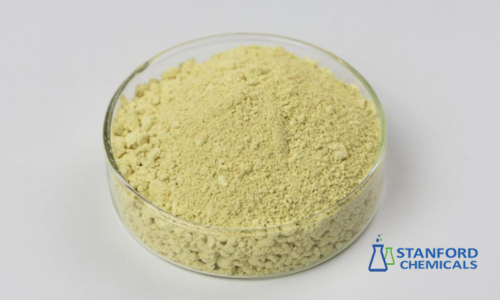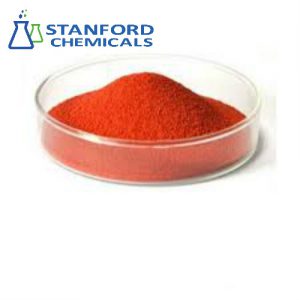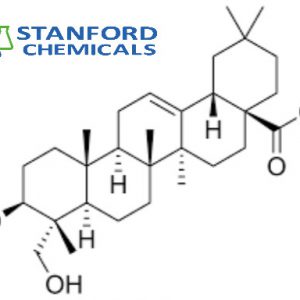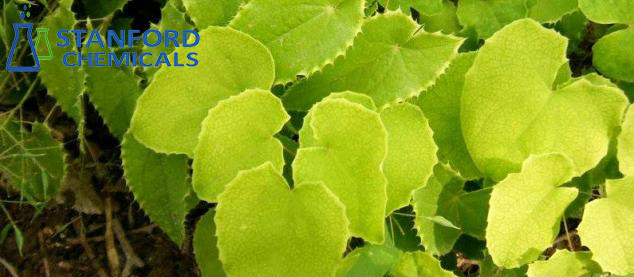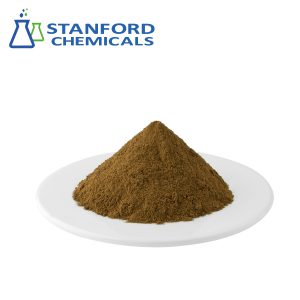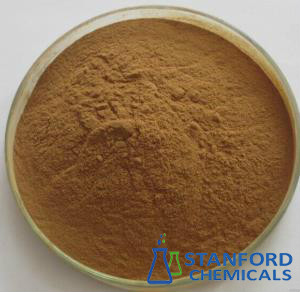- Home
- Herbal Extract
- HA9003 Luteolin Powder
HA9003 Luteolin Powder
| Parameter | Value |
| Material | Luteolin |
| CAS Number | 491-70-3 |
| Purity | 98% |
| Appearance | Yellow Crystal Powder |
related products: Echinacea Purpurea Extract, Bearberry Leaf Extract Powder, Loquat Leaf Extract
- Description
Description
Luteolin Powder Description
Luteolin Powder is a light yellow crystalline solid with a molecular weight of 286.24 g/mol and a melting point >330°C. Its intrinsic solubility in water is low (1.01 μg·mL⁻¹) but moderate in dimethyl sulfoxide (14.31 mg·mL⁻¹) and alkaline medium. The material degrades upon exposure to long-term UV irradiation or heat >60°C, and storage should, therefore, be in tight, light-shielded containers at 4°C. Its bioactivity is due to a polyhydroxyflavone structure that supports highly efficient free-radical scavenging, with singlet oxygen quenching activity better than synthetic antioxidants. Pharmacologically, luteolin is a tyrosinase inhibitor in a competitive manner and SARS-CoV-2 main protease binder (Kd = 8.2 μM), with disruptive effects on viral replication. Stability is pH-dependent, with best integrity at 5–7 pH and breakage in strong alkalis or acids by glycosidic bond hydrolysis. Analytical profiles confirm heavy metals ≤10 ppm and microbial contaminants controlled to pharmacopeial limits. Complex forms like cyclodextrin complexes or solid dispersions increase aqueous solubility 100-fold via hydrogen bonding and conversion to amorphous form, though hygroscopicity requires dry storage to prevent clumping.
Luteolin Powder Specifications
Properties
| Property | Value |
| Material | Luteolin |
| CAS No. | 491-70-3 |
| Purity | 98% |
| Appearance | Yellow Crystal Powder |
| Molecular Formula | C15H10O6 |
| Molecular Weight | 286.24 |
| Melting Point | 330 °C |
| Boiling Point | 616.1 °C at 760 mmHg |
*The above product information is based on theoretical data. For specific requirements and detailed inquiries, please contact us.
Luteolin Powder Applications
- Pharmaceuticals and Therapeutics: Formulated into tablets and capsules for anticancer and anti-inflammatory therapies. Luteolin down-regulates NF-κB and COX-2 pathways, which inhibit TNF-α by 70% in lung carcinoma models and manage severe acute pancreatitis through HO-1 induction. Solid dispersions with PVP/VA enhance oral bioavailability to 348%, facilitating clinical use in neurology and oncology.
- Nutraceuticals and Functional Foods: Added to neuroprotective and liver health supplements. 100 mg/kg increases glutathione synthesis, which protects against non-alcoholic steatohepatitis in metabolic syndrome models. Synergized with curcumin for improved antioxidant effects in functional beverages.
- Cosmetics and Personal Care: Added to anti-aging creams (0.5%–5%) to provide photo protection. Luteolin reduces collagenase activity by 40% and inhibits melanogenesis through tyrosinase inhibition, correcting hyperpigmentation and photoaging in sensitive skin products.
- Biomedical Applications and Diagnostics: Utilized as a molecular probe attached to biotin for imaging cells. Binds to avidin receptors to image cancer cell surfaces and study flavonoid uptake kinetics. Also studied for the treatment of COVID-19 via SARS-CoV-2 main protease binding.
- Agriculture and Food Preservation: Utilized as a natural food preservative in active food packaging films. Extends shelf life of meat by 17.8% via lipid peroxidation inhibition and suppresses the growth of fungi in postharvest produce.
Luteolin Powder FAQs
Q1. How to maximize its absorption?
Choose PVP/VA-based solid dispersions—bioavailability 3.5× vs. raw powder. Take without excessive fat meals to prevent lymphatic uptake delays.
Q2. Does it expire? How to store?
Shelf life: 2 years from date opened. Store at 4°C in dark glass vials with desiccants. Discard if brown becomes darker.
Q3. Can I apply it topically for acne?
Yes. 2% serums reduce pustules 60% by IL-6 inhibition. Patch test first—avoid if sensitive to Asteraceae plants.

